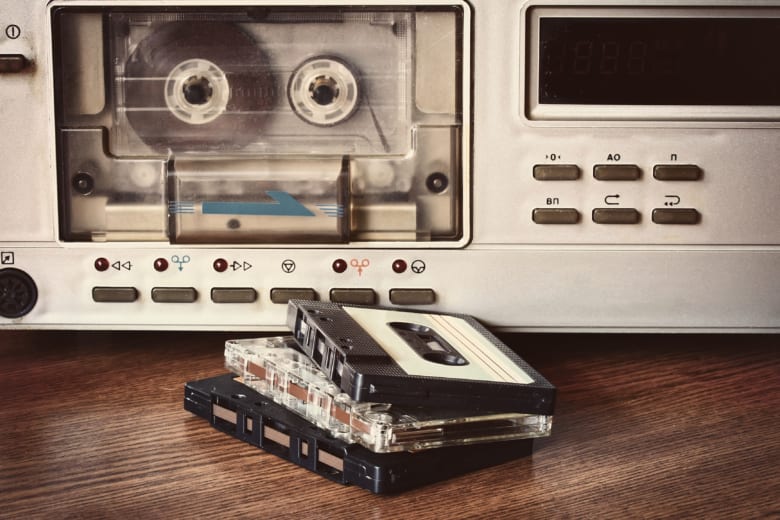Audio cassette tapes are by far the most popular audio format that we see at EverPresent. Cassette tapes have been around for a while but were rapidly replaced by digital formats such as CDs and are not widely used today. Still, you probably have plenty of these audio tapes lying around and you might want to convert them to CDs or .mp3 file formats. Here are a few fun facts about audio cassette tapes:
- Cassette tapes have many different names including: Compact Cassette, Musicassette, MC, or simply tape or cassette.
- Audio tapes were developed by Philips in 1962 and the first players designed for use in cars were introduced in 1968.
- The cassette tapes predecessors were 8 track tapes, reel-to-reel tape recordings and LP records.
- The tape itself is a magnetic tape, which was first developed in Germany. It has a wide application, the two most prominent of which are audio recording and use in credit cards for swiping.
- A common problem we find in all magnetic tapes is called Sticky Shed Syndrome, which results from the deterioration of the tape. In severe cases, it renders the tapes unplayable.
- The proliferation of audio cassettes as a consumer product coincided with the enormous popularity of boom boxes, stereo tape decks, and portable players such as the Walkman during the 1970s and 1980s.
- Sales of audio cassettes dropped sharply in the 1990s as they were overtaken by advances in CD technology.
- The playable length of audio tapes ranges from 23 minutes per side up to 60 minutes per side.
- Audio cassette tapes are roughly equivalent in size to 8mm tapes, which we also transfer to DVD. This often causes them to be confused.
- Cassette tapes were originally intended to be used in dictation machines.
If you have a lot of these tapes that you still want to jam out to on your morning commute but your car no longer supports audio cassettes, or you’d like to learn a little more about the format and how we digitize it, give us a call at 617-505-1132 and we’d be happy to help!

